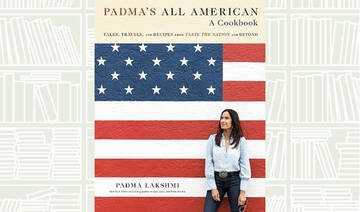Sabahattin Ali published “Madonna in a Fur Coat” in Istanbul, Turkey, in 1943. At the time, the book was one of many of his published works. They were widely circulated in Turkey and held in high esteem although, at times, they got him into trouble. While this book may not have gained much recognition then, its popularity today in Turkey, 70 years later, is greater than many other authors. And now, translated into English by Maureen Freely and Alexander Dawe, it can attract a new generation of readers.
“Madonna in a Fur Coat” is the introspective journey of a young man in the 1930s. Told from a narrator’s perspective – one whose name the reader never learns – it opens with him struggling to find work after losing his job. While desperately wandering the streets, the narrator happens to stumble upon an old friend, Hamdi, who promises to help him out of his predicament.
“When misfortune visits those who once walked alongside us, we also tend to feel relief, almost as if we believe we have ourselves been spared, and as we come to convince ourselves that they are suffering in our stead, we feel for these wretched creatures.”
Hamdi offers the narrator a job in his firm and it is here that he meets “the rather ordinary” Raif Efendi, a man “with no distinguishing features – no different from the hundreds of others we meet and fail to notice in the course of a normal day.”
The narrator discovers that Raif Efendi is the longest-serving clerk in the company and that his translations are exceptional, but who has no friends. Despite his excellent work, Raif Efendi is constantly ridiculed and yelled at by his bosses but he never retaliates. He has a lackluster daily routine, which he does not alter, not even to join the other clerks in the coffee houses to play backgammon. His demeanor eventually begins to annoy the narrator as a man who “had, I thought, no more life inside him than a plant,” until one day he notices Raif Efendi has made a brilliant sketch of one of the directors who always yells at him.
“Nowhere had I seen the line between cruelty and wretchedness so clearly drawn.” Realizing he may have misjudged Raif Efendi, the narrator grows curious to find out all he can about him.
But the task to get to know him is difficult as Raif Efendi falls sick often due to pleurisy, and so misses days at the office. That, however, does not stop the company from sending him work. One day, the narrator offers to take Raif Efendi’s work to him, eager to learn about the man and his family.
He discovers that Raif Efendi’s home is decorated with the finest crystal and velvet in spaces where guests can see but nowhere else. His family is not pleasant, least of all to Raif Efendi, treating him “as if he were expendable, and always in the way.” But Raif Efendi acts the same with them, without reacting. He is a man who “did more than just tolerate ridicule from people with whom he had nothing in common: he seemed actively to approve of those who looked down on him…”
One day, Raif Efendi falls extremely ill. It is at this point that he asks the narrator to retrieve his things from his office desk, everything from his top drawer, especially his black notebook, which is to be destroyed. It is a diary of sorts, one that dates back a decade, revealing a younger, different Raif Efendi.
“I looked at this man who wished to leave nothing of himself behind, who, even as he moved toward death, wished to take his loneliness with him.”
After pleading with Raif Efendi to allow him to keep the notebook, the narrator takes it home and reads it. He finds Raif Efendi as a young, bookish boy, “one of those quiet boys who preferred dreams to the real world.” Sent to Germany to learn everything he could about soap manufacturing, young Raif is fascinated by Europe and uninterested in making soap. He busies himself with books, learning German and absorbing all he can from the museums and galleries he visits. One day, he happens to find himself an art exhibition where he discovers the portrait of a woman with a “strange, formidable, haughty and almost wild expression, one that I had never seen before on a woman.” Raif is transfixed by this portrait of a madonna in a fur coat and eventually meets the painter who changes his life and helps to explain the mystery of Raif Efendi.
Sabahattin Ali was many things in his life; a poet, a short story writer, a teacher and the owner of a newspaper. He served time in prison at various periods in his life, once when he criticized the founder of the Republic of Turkey, Mustafa Kemal Ataturk. Always using his writing as his strongest weapon, he was eventually killed in 1948 under suspicious circumstances while trying to get to Bulgaria.
Ali’s writing is moving and reflective. He writes of every character intimately, as if he has encountered and watched them his entire life. There is beauty in his disenchantment through description that shapes and molds characters and scenes for exactly what they are. He seems disillusioned by the world he lives in but revived by his revolutionary ideas of the role of men and women in society, relationships and life.
Ali seems as if he lived in a world that was not black and white, but many shades of beautiful colors revealed through nature and relationships. In this book, it is evident that there is no protagonist or antagonist in his stories, just people who live for themselves and sometimes devote their efforts to others. Ultimately, Ali reveals that life is a journey to be taken alone, because people’s experiences are not the same. As the narrator says about Raif Efendi in “Madonna in a Fur Coat,” one feels about Ali, a man who was taken before his time, “To live in the same place was not to live as he did.”
— Manal Shakir is the author of “Magic Within,” published by Harper Collins India, and a freelance writer. She lives in Chicago, Illinois.
• [email protected]
Book Review: One man’s journey through the eyes of another
Book Review: One man’s journey through the eyes of another

Book Review: ‘Keep the Memories, Lose the Stuff’

If you are someone who adopts a new year, new me mindset every Dec. 31, then Matt Paxton’s 2022 book “Keep the Memories, Lose the Stuff: Declutter, Downsize, and Move Forward with Your Life,” written with Jordan Michael Smith, is worth picking up.
In the process of reading it, I found myself filling four bags with items to donate.
Paxton’s approach is notably different from Marie Kondo’s once-ubiquitous Japanese tidying method, which asks readers to pile all their possessions into one part of the room, hold each item up and ask whether it sparks joy.
While Kondo’s philosophy sounds appealing on paper — thanking objects and dedicating an entire weekend to the process — it is not realistic for everyday life. Paxton’s method feels more practical and gentler.
Paxton knows the emotional terrain of clutter well. For more than 20 years he has helped people declutter and downsize. He was a featured cleaner on the reality show “Hoarders” and later hosted the Emmy-nominated “Legacy List with Matt Paxton” on PBS.
Through this work, Paxton gained insight into why people hold on to things and what makes letting go difficult even of what seemingly looks useless.
What works especially well is how personal the book feels from the outset.
He opens by explaining his anxiety-inducing decision to move to a different US state with his three children, and all of their stuff, to live with his new wife and all of her stuff.
Together, they would be raising seven children — very Brady Bunch style — but with slightly more practical life considerations.
He also talks about how he got into this line of work. When he was in his 20s, his father died and he had to help clear out his belongings. He found that process to be cathartic and special. And he was good at it.
Soon after, short on cash, he accepted a job from someone in his small, close-knit community to help organize her home — likely hired out of pity more than anything else.
That slow process of sifting through items and learning the stories behind each one — directly from the owner of those objects — sparked plenty of joy. He was hooked.
Throughout the book, Paxton makes the case for consistency. His advice is manageable. He encourages readers to dedicate just 10 minutes a day to decluttering to form a habit. We all can spare that.
Paxton also stresses the importance of communication.
Talk to your loved ones about what you want done with your belongings when you are no longer around, and just as importantly, listen to what they want done with theirs, he urges. He offers practical guidance on having these conversations with parents, partners and children.
One critique of this book is that Paxton dedicates a large portion to physical photographs. While this is relevant for many older readers, it may feel less urgent going forward, particularly for Gen Z and younger, whose clutter is more likely to be solely digital.
Ultimately, “Keep the Memories, Lose the Stuff” is less about getting rid of things than about making space; by speaking about objects, sharing their stories and allowing them — and each of us — to move on.















